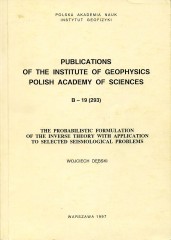- A - Physics of the Earth's Interior
- B - Seismology
-
C - Geomagnetism
C-119, C-118, C-117, C-116, C-115, C-114, C-113, C-112, C-111, C-110, C-109, C-108, C-107, C-106, C-105, C-104, C-103, C-102, C-101, C-100, C-99, C-98, C-97, C-96, C-95, C-94, C-93, C-92, C-91, C-90, C-89, C-88, C-87, C-86, C-85, C-84, C-83, C-82, C-81, C-80, C-79, C-78, C-77, C-76, C-75, C-74, C-73, C-72, C-71, C-70, C-69, C-68, C-67, C-66, C-65, C-64, C-63, C-62, C-61, C-60, C-59, C-58, C-57, C-56, C-55, C-54, C-53, C-52, C-51, C-50, C-49, C-48, C-47, C-46, C-45, C-44, C-43, C-42, C-41, C-40, C-39, C-38, C-37, C-36, C-35, C-33, C-32, C-31, C-30, C-29, C-28, C-27, C-26, C-25, C-24, C-23, C-22, C-21, C-20, C-19, C-18, C-17, C-16, C-15, C-14, C-13, C-12, C-11, C-10, C-9, C-8, C-7, C-6, C-5, C-4, C-3, C-2, C-1
-
D - Physics of the Atmosphere
D-79, D-78, D-77, D-76, D-75, D-74, D-73, D-72, D-71, D-70, D-69, D-68, D-67, D-66, D-65, D-64, D-63, D-62, D-61, D-60, D-59, D-58, D-57, D-56, D-55, D-54, D-53, D-52, D-51, D-50, D-49, D-48, D-47, D-46, D-44, D-45, D-43, D-42, D-41, D-40, D-39, D-38, D-37, D-35, D-34, D-33, D-32, D-31, D-30, D-28, D-27, D-26, D-25, D-24, D-23, D-22, D-21, D-20, D-19, D-18, D-17, D-16, D-15, D-14, D-13, D-12, D-11, D-10, D-9, D-8, D-7, D-6, D-5, D-4, D-3, D-2, D-1
- E - Hydrology
- P - Polar Research
- M - Miscellanea
-
Online First
The Probabilistic Formulation of the Inverse Theory with Application to Selected Seismological Problems
Volume: 293
Series: B-19
In seismological investigations we are dealing with two types of problems: the forward and inverse ones. Inverse problems are all those problems in which we try to extract the desired information about a given physical system from information provided by an experiment, theory, or other sources.
The aim of this paper is to analyze selected seismological problems by means of the formalism of the Bayesian inverse theory. Particular items are connected with three different aspects of seismology, namely earthquake seismology (location of seismic sources), prospecting seismology (inverse of the AVO effect) and mining seismology (amplitude tomography).
CONTENTS
Abstract, ...0
Preface and acknowledgements, ...0
Introduction, ...1
1. Inverse theory, ...4
1.1 Introduction, ...4
1.2 States of information, ...5
1.3 Inverse problems, ...21
1.4 Solving inverse problems, ...31
2. Location of seismic events, ...36
2.1 Introduction, ...36
2.2 The resolution of hypocentre coordinates, ...38
2.3 Location uncertainties, ...52
2.4 Location of natural seismic earthquakes, ...62
3. Inversion of amplitude variations, ...100
3.1 Introduction, ...100
3.2 Parameters describing and elastic earth, ...101
3.3 The synthetic experiment, ...102
3.4 The inversion, ...104
3.5 The a priori information, ...105
3.6 The a posteriori information, ...111
3.7 Discussion, ...117
4. Amplitude tomography, ...121
4.1 Introduction, ...121
4.2 Tomography imaging in mines, ...123
4.3 The numerical experiment, ...124
4.4 Results, ...132
4.5 Conclusions, ...142
Appendix A. Norms and probability densities, ...144
A.1 The least squares norm ℓ2, ...145
A.2 The least-absolute-values norm ℓ1, ...149
A.3 The generalized Gaussian norm ℓp, ...151
A.4 The minimax norm ℓ∞, ...151
A.5 The Cauchy norm ℓC, ...153
A.6 The hyperbolic secant norm ℓS, ...154
References, ...158
Streszczenie, ...164
List of symbols, ...168


